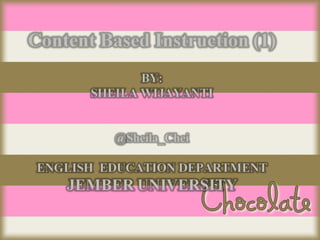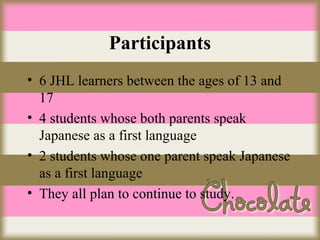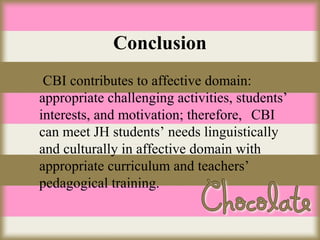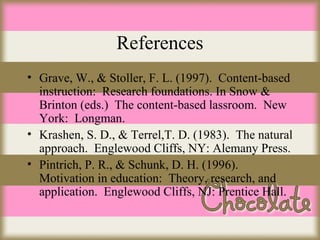This document discusses content-based instruction (CBI) for Japanese heritage language learners. It summarizes previous research on CBI and motivation, defines heritage language learners, and outlines challenges for Japanese language teachers. The document also presents research questions and describes a study that interviewed 6 Japanese heritage students to understand how CBI impacts their affective domain. Key findings indicate that CBI enhances student interest and motivation by incorporating relevant content, appropriate challenge, and addressing academic and non-academic language goals.



































